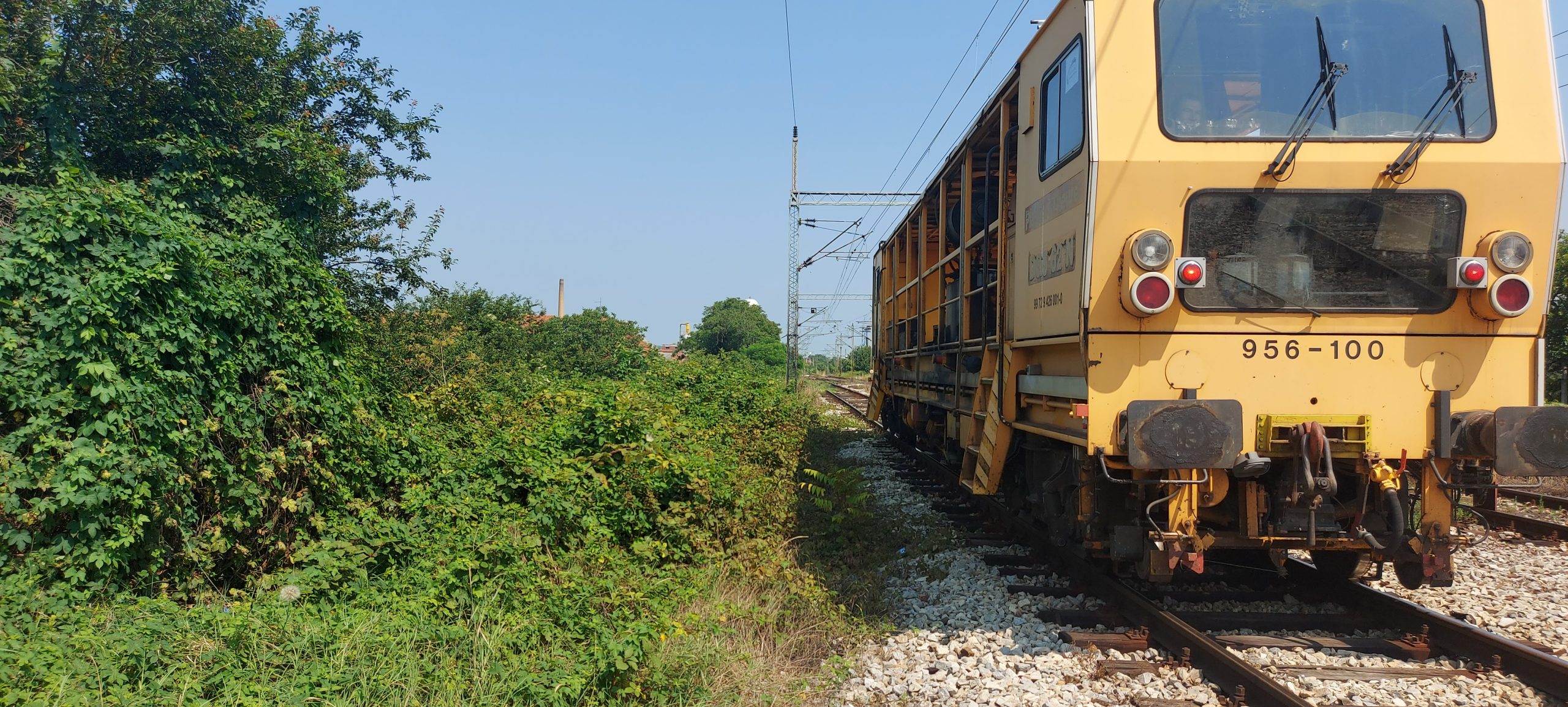
The history of railway transportation in Serbia commenced during the mid-19th century when a substantial portion of the region was still under the control of the Austro-Hungarian and Ottoman Empires. The inception of rail travel within present-day Serbia occurred on 20th August 1854, connecting Lisava-Oravica-Bazijaš. Initially, the trains were pulled by horses, a method that was subsequently replaced by steam locomotives. Nonetheless, the most significant expansion occurred following the Berlin Congress and the Principality of Serbia’s declaration of independence during the latter half of the 19th century.
The roots of Serbian Railways as a corporation can be traced back to 1881 when Prince Milan I officially established the Serbian National Railways. The inaugural journey from Belgrade to Niš took place on 23rd August 1884, marking the official foundation of the company according to Serbian Railways. This railway route holds immense importance within Serbia and has been operational for well over 130 years.
“Ensuring seamless transportation demands significant investments.”
Anita Dimoski, acting assistant minister for railway and intermodal transport, Government of Serbia
In the 1990s, following the breakup of the Socialist Federal Republic of Yugoslavia, Serbia’s railway system faced significant challenges. Infrastructure maintenance was neglected, leading to a steep decline in rail traffic, particularly in the transportation of goods. The turmoil of the 1990s, including conflicts, international sanctions, and NATO bombings, coupled with subsequent economic crises, further hindered the necessary upkeep of Serbia’s railway network, notably the vital Belgrade-Nis line.
Anita Dimoski, the acting assistant minister for railway and intermodal transport in the Serbian government, sheds light on the situation. She explains that both the government and the railways had an established plan for the regular reconstruction of a specific length of railway tracks each year. However, due to financial crises and the impact of the COVID-19 pandemic, these routine maintenance activities had to be postponed. “Ensuring seamless transportation demands significant investments,” Mrs. Dimoski points out. Consequently, they found themselves compelled to reduce speeds on sections where intervention was not possible, and one such section was the Belgrade-Nis railway route.
The cherished vision of a smoothly operating railway on this route is finally on the verge of becoming a reality. The European Union has pledged a substantial €2.2 billion in EU funding for the Belgrade-Niš rail line. Thanks to this financial support, the train journey between these two Serbian cities will soon take less than two hours, with speeds of up to 200 km/h. Currently, the train ride consumes a minimum of six hours, while the car journey takes approximately three hours. Specifically, the European Union will contribute up to €610 million in grants, marking it as the most substantial EU grant for a single project in Serbia thus far. This comprehensive package also encompasses a €1.1 billion loan from the European Investment Bank (EIB) and a €550 million loan from the European Bank for Reconstruction and Development (EBRD). The remaining portion of the investment will be covered by the Government of Serbia.
Olivér Várhelyi, the European Commissioner for Enlargement Negotiations, underlined the significance of this project, stating, “We have picked this project because this project is capable of changing the realities on the ground for the people of Serbia, for the people of southern Serbia, and with that, also for the entire region.” He made these remarks during the EU financing promotion event in Belgrade on 28 February this year.

“This segment of the rail line carries immense significance for Serbia. Beyond its economic and environmental implications, it also holds cultural and social importance. Connecting people not only fosters the maintenance of existing friendships but also the creation of new ones and the nurturing of social relationships.”
Anita Dimoski, acting assistant minister for railway and intermodal transport, Government of Serbia
Following its completion, the new railway is poised to deliver substantial benefits, with an anticipated annual ridership of over 2.3 million passengers and the transport of 9.4 million tonnes of cargo. This development holds the promise of creating fresh business opportunities and job prospects. “This segment of the rail line carries immense significance for Serbia. Beyond its economic and environmental implications, it also holds cultural and social importance. Connecting people not only fosters the maintenance of existing friendships but also the creation of new ones and the nurturing of social relationships,” highlights Mrs. Dimoski.
Mrs. Anita Dimoski underscores the pivotal role played by EU support in this project. “Relying solely on our own resources would significantly prolong the project timeline and impose a heavy financial burden on our government. Thanks to this support, we will be able to complete the project much more expeditiously,” Dimoski affirms.
About the project
The rehabilitation of the Belgrade-Niš railway will improve Serbia’s connections to other European rail networks. It will facilitate faster freight transport and significantly reduce commuting time. As rail is a clean mode of transport, the modernisation of the railway system also contributes to a cleaner environment. Transport projects funded by the EU in Serbia aim to improve connections and, thus, boost economic integration – for Serbia into the region, and for the region into the EU. They contribute to railway reform and to the introduction of modern, cost-effective road infrastructure maintenance.
Serbia corridor X railways fl – global gateway
Photo credits: Serbia Railways
In the 1990s, following the breakup of the Socialist Federal Republic of Yugoslavia, Serbia’s railway system faced significant challenges. Infrastructure maintenance was neglected, leading to a steep decline in rail traffic, particularly in the transportation of goods. The turmoil of the 1990s, including conflicts, international sanctions, and NATO bombings, coupled with subsequent economic crises, further hindered the necessary upkeep of Serbia’s railway network, notably the vital Belgrade-Nis line.
Anita Dimoski, the acting assistant minister for railway and intermodal transport in the Serbian government, sheds light on the situation. She explains that both the government and the railways had an established plan for the regular reconstruction of a specific length of railway tracks each year. However, due to financial crises and the impact of the COVID-19 pandemic, these routine maintenance activities had to be postponed. “Ensuring seamless transportation demands significant investments,” Mrs. Dimoski points out. Consequently, they found themselves compelled to reduce speeds on sections where intervention was not possible, and one such section was the Belgrade-Nis railway route.
The cherished vision of a smoothly operating railway on this route is finally on the verge of becoming a reality. The European Union has pledged a substantial €2.2 billion in EU funding for the Belgrade-Niš rail line. Thanks to this financial support, the train journey between these two Serbian cities will soon take less than two hours, with speeds of up to 200 km/h. Currently, the train ride consumes a minimum of six hours, while the car journey takes approximately three hours. Specifically, the European Union will contribute up to €610 million in grants, marking it as the most substantial EU grant for a single project in Serbia thus far. This comprehensive package also encompasses a €1.1 billion loan from the European Investment Bank (EIB) and a €550 million loan from the European Bank for Reconstruction and Development (EBRD). The remaining portion of the investment will be covered by the Government of Serbia.
Olivér Várhelyi, the European Commissioner for Enlargement Negotiations, underlined the significance of this project, stating, “We have picked this project because this project is capable of changing the realities on the ground for the people of Serbia, for the people of southern Serbia, and with that, also for the entire region.” He made these remarks during the EU financing promotion event in Belgrade on 28 February this year.

Following its completion, the new railway is poised to deliver substantial benefits, with an anticipated annual ridership of over 2.3 million passengers and the transport of 9.4 million tonnes of cargo. This development holds the promise of creating fresh business opportunities and job prospects. “This segment of the rail line carries immense significance for Serbia. Beyond its economic and environmental implications, it also holds cultural and social importance. Connecting people not only fosters the maintenance of existing friendships but also the creation of new ones and the nurturing of social relationships,” highlights Mrs. Dimoski.
Mrs. Anita Dimoski underscores the pivotal role played by EU support in this project. “Relying solely on our own resources would significantly prolong the project timeline and impose a heavy financial burden on our government. Thanks to this support, we will be able to complete the project much more expeditiously,” Dimoski affirms.
About the project
The rehabilitation of the Belgrade-Niš railway will improve Serbia’s connections to other European rail networks. It will facilitate faster freight transport and significantly reduce commuting time. As rail is a clean mode of transport, the modernisation of the railway system also contributes to a cleaner environment. Transport projects funded by the EU in Serbia aim to improve connections and, thus, boost economic integration – for Serbia into the region, and for the region into the EU. They contribute to railway reform and to the introduction of modern, cost-effective road infrastructure maintenance.
Photo credits: Serbia Railways
Please wait while your video is being uploaded...
Don't close this window!